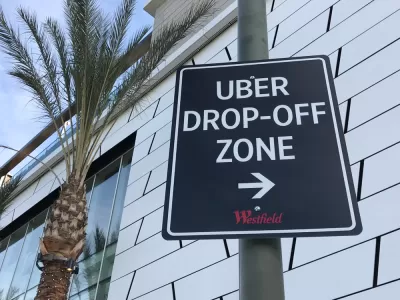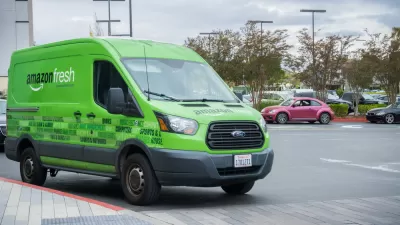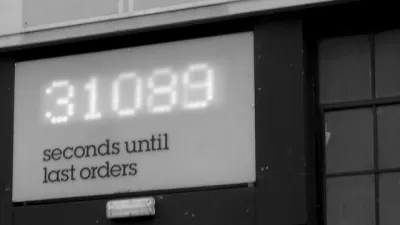Washington, D.C. continues its leadership in the management of curb space as transportation modes change. First, the District experimented with curb areas for ride-hailing companies; now the focus shifts to app-based delivery services.

The Washington, D.C. District of Transportation (DDOT) is adding features to its curbside management program, dubbed the curbside pickup-dropoff (PUDO) program.
According to an article by Katie Pyzyk, the new innovations in the program focus on commercial curb scape activity.
"DDOT partnered with mobility company curbFlow to research and analyze demand at nine locations where commercial delivery pickup-dropoff activities often result in double parking. Starting Aug. 1, parking will be removed at these locations for 12 weeks to create commercial loading zones where study participants will use a free app to coordinate curb time," according to Pyzyk.
"Analysts at curbFlow will collect data to determine curb space safety, utilization, productivity and equitable access. The study will help DDOT understand the changing delivery landscape and inform decisions about curb space use policies," adds Pyzyk.
As noted in the article, Washington, D.C. was one of the first to launch a program to manage curb space for transportation network companies (also referred to as ride-hailing companies). The new aspects of the program retain one critical element of the program's previous focus on TNCs: personal vehicles used for commercial services. The newly announced focus of the program will deal with app-based food, alcohol, grocery, convenience store and other goods delivery services that often use the same model, explains Pyzyk.
FULL STORY: DC launches curb space pilot for commercial deliveries

Alabama: Trump Terminates Settlements for Black Communities Harmed By Raw Sewage
Trump deemed the landmark civil rights agreement “illegal DEI and environmental justice policy.”

Planetizen Federal Action Tracker
A weekly monitor of how Trump’s orders and actions are impacting planners and planning in America.

The 120 Year Old Tiny Home Villages That Sheltered San Francisco’s Earthquake Refugees
More than a century ago, San Francisco mobilized to house thousands of residents displaced by the 1906 earthquake. Could their strategy offer a model for the present?

In Both Crashes and Crime, Public Transportation is Far Safer than Driving
Contrary to popular assumptions, public transportation has far lower crash and crime rates than automobile travel. For safer communities, improve and encourage transit travel.

Report: Zoning Reforms Should Complement Nashville’s Ambitious Transit Plan
Without reform, restrictive zoning codes will limit the impact of the city’s planned transit expansion and could exclude some of the residents who depend on transit the most.

Judge Orders Release of Frozen IRA, IIJA Funding
The decision is a victory for environmental groups who charged that freezing funds for critical infrastructure and disaster response programs caused “real and irreparable harm” to communities.
Urban Design for Planners 1: Software Tools
This six-course series explores essential urban design concepts using open source software and equips planners with the tools they need to participate fully in the urban design process.
Planning for Universal Design
Learn the tools for implementing Universal Design in planning regulations.
Clanton & Associates, Inc.
Jessamine County Fiscal Court
Institute for Housing and Urban Development Studies (IHS)
City of Grandview
Harvard GSD Executive Education
Toledo-Lucas County Plan Commissions
Salt Lake City
NYU Wagner Graduate School of Public Service





























